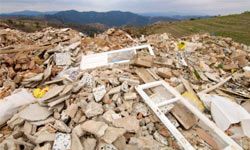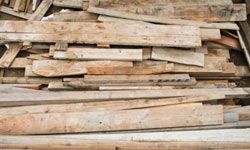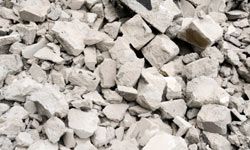Like most cities, Akron, Ohio has its share of vacant buildings. In the past, no one would have batted an eye at taking a wrecking ball and razing the structures. Not any longer. In 2010, the city and the local Habitat for Humanity began to dismantle four empty structures bit-by-bit instead of bulldozing them.
If taking a house apart, board-by-board, shingle-by-shingle, seems like a tedious -- some would say painstaking -- job, it is. A demolition contractor can usually tear down a single-family house in two days; it took Akron Habitat workers 20. The city usually pays a contractor $3,484 to knock down a home, but Akron paid Habitat for Humanity $7,500 to "deconstruct" one house [source: Breckenridge].
Advertisement
Although deconstruction, the process of tearing down a house while salvaging and recycling building materials, is initially more expensive and time consuming than outright demolition, it is far better for the environment. In deconstructing a building, workers save and reuse whatever materials they can instead of taking the debris to a local landfill. In fact, Habitat plans to sell what they retrieve so others can reuse the materials.
According to the Construction Materials Recycling Association, construction and demolition waste are the largest sources of trash in the United States. The association says 325 million tons of recoverable construction debris is generated in the United States each year [source: Construction Materials Recycling Association]. In the past, all that metal, concrete, wood, block and asphalt would have ended up in a landfill. The key to a successful deconstruction project is to reuse what you can, and recycle the rest.
While not every bit of construction and demolition debris can -- or even should -- be recycled, much of what goes into a house can be reused. Go to the next page to find out which construction materials can easily be recycled at your job site.




